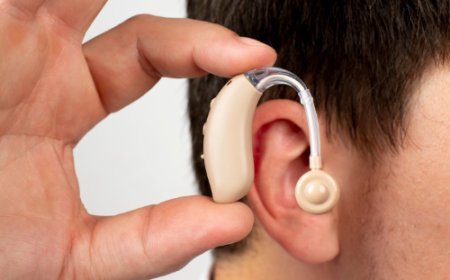Can I get a hair transplant if I have alopecia?

Hair loss can be emotionally distressing and physically visible, especially for individuals suffering from alopecia. Among the potential treatment options, a hair transplant often comes to mind as a long-term solution. However, not all types of alopecia are treated the same way, and hair transplant candidacy depends on several clinical factors. For individuals exploring Hair transplant in Islamabad, understanding how alopecia interacts with hair restoration techniques is critical to achieving safe and realistic outcomes.
Understanding Alopecia and Its Types
Alopecia is a general term used to describe hair loss. It can be caused by various underlying factors and presents in multiple forms. Some of the most common types include:
-
Androgenetic Alopecia: Also known as male or female pattern baldness, this hereditary condition is the most common form of hair loss and is typically treatable with hair transplantation.
-
Alopecia Areata: An autoimmune condition where the immune system attacks hair follicles, leading to patchy hair loss. In many cases, hair can regrow spontaneously, though recurrence is common.
-
Scarring (Cicatricial) Alopecia: This type of alopecia destroys hair follicles and replaces them with scar tissue. The scalp may appear smooth, shiny, or show signs of inflammation.
-
Traction Alopecia: Caused by continuous pulling or tension on hair due to certain hairstyles or practices.
Each form of alopecia behaves differently, which is why diagnosis by a qualified dermatologist or hair restoration specialist is the first step before considering a transplant.
Hair Transplants and Androgenetic Alopecia
Patients with androgenetic alopecia are typically the most suitable candidates for hair transplantation. In these cases, hair loss follows a predictable pattern, and a stable donor area—usually at the back or sides of the scalp—remains unaffected by the condition. The follicles from these areas are genetically resistant to balding and are ideal for transplantation.
A successful transplant in this scenario often results in permanent, natural-looking hair growth, and the progression of hair loss can be managed with complementary treatments such as medications or laser therapy.
Hair Transplants and Alopecia Areata
Hair transplantation is not generally recommended for patients with active alopecia areata. The autoimmune nature of the condition can lead to unpredictable and recurring hair loss, which may include transplanted grafts. While patients with long-standing, stable alopecia areata that has not progressed for several years may be evaluated for surgery, this is done cautiously and only after other therapeutic avenues have been explored.
Before considering surgery, doctors may recommend corticosteroid injections, immunotherapy, or systemic medications to bring the autoimmune response under control. Even then, surgical outcomes in alopecia areata are less predictable than in androgenetic alopecia.
Hair Transplants and Scarring Alopecia
In cases of scarring alopecia, the possibility of a hair transplant depends heavily on disease activity. If the scarring process has become inactive and the scalp is stable for at least one year, a transplant may be considered. However, success rates vary, and outcomes depend on the extent of damage to the scalp, blood supply to the area, and the skill of the surgeon.
Scarring alopecia presents unique challenges because the underlying skin is often less vascular, making it harder for transplanted follicles to survive. A thorough biopsy and scalp analysis are typically necessary before making any surgical decisions.
Hair Transplants and Traction Alopecia
Patients with traction alopecia, especially in its early stages, are often good candidates for hair transplantation. Once the source of tension is eliminated and the condition has stabilized, affected areas can be restored with transplanted hair follicles. Long-term results are generally positive if the pulling force is not reintroduced.
How Do You Know If You’re a Candidate?
Candidacy for a hair transplant when dealing with alopecia is determined by evaluating several factors:
-
Type of alopecia
-
Extent and stability of hair loss
-
Presence of a healthy donor area
-
Overall scalp condition
-
Medical history and ongoing treatments
A comprehensive consultation with a hair restoration expert is essential. Diagnostic tools such as trichoscopy, scalp biopsy, and blood work may be employed to assess scalp health and diagnose the type of alopecia accurately.
Additional Considerations Before Surgery
-
Managing Expectations: Patients with alopecia, particularly non-androgenetic types, must understand that hair transplants may not offer permanent solutions if the underlying disease is still active.
-
Postoperative Monitoring: Close follow-up is critical to monitor the condition of the grafts and detect any signs of recurrence or new patches of hair loss.
-
Combination Therapies: In many cases, hair transplant surgery is combined with medical treatments to enhance outcomes. Minoxidil, finasteride, platelet-rich plasma (PRP) therapy, and low-level laser therapy may be recommended as adjuncts.
-
Timing Is Important: Underlying scalp conditions must be fully stabilized before any surgical intervention. Rushing into a transplant without proper evaluation can lead to poor results or graft failure.
Conclusion
Whether a person with alopecia can undergo a hair transplant depends on the specific type and progression of their hair loss. While individuals with androgenetic alopecia and stabilized traction alopecia often make excellent candidates, those with autoimmune or scarring forms of hair loss require more careful assessment and monitoring. Accurate diagnosis, scalp evaluation, and expert guidance are necessary to determine the most appropriate treatment path. For a thorough consultation and personalized treatment plan, visit the professionals at SKN Cosmetics clinic.
What's Your Reaction?




























































